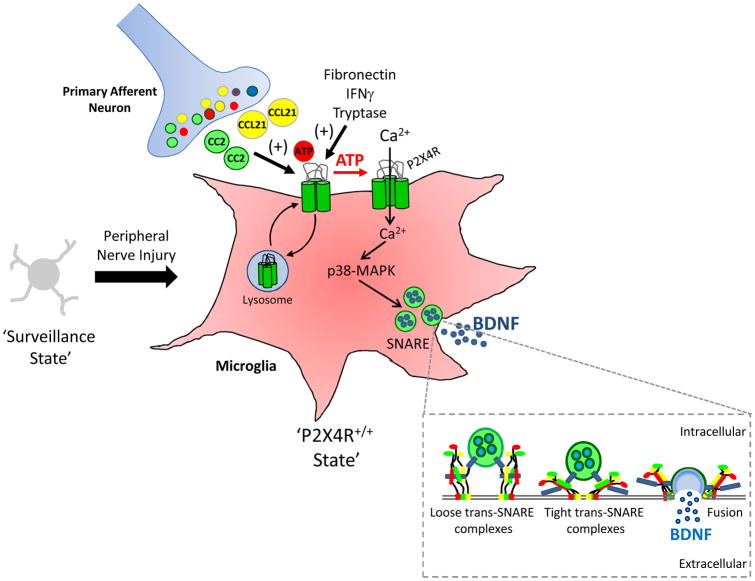Figure 1.
Dynamic regulation of P2X4 receptors in microglia. Microglia in the physiological CNS actively monitor their surrounding environment for potential stimuli that threaten homeostasis. In response to peripheral nerve injury spinal microglia upregulate expression of P2X4 receptors, which normally are expressed at low levels in the ‘resting/surveillance state.’ Upregulation of P2X4 receptors is a critical mechanistic step through which spinal microglia signal to neurons in the spinal dorsal horn to cause neuropathic pain. Activation of P2X4 receptors initiates the p38 MAPK-BDNF-KCC2 signalling cascade to cause aberrant nociceptive output that underlies pain hypersensitivity characterized by hyperalgesia, allodynia, and spontaneous pain. Molecules released from injured neurons, such as the chemokines CCL2 and CCL21, as well as the cytokine IFN-γ, increase P2X4 receptor expression in microglia. The fibronectin-Lyn kinase signalling cascade and tryptase released from mast cells have also been found to upregulate P2X4 receptors in microglia. Thus, the P2X4 receptor and the components of its signalling pathway have emerged as a core mechanism through which spinal microglia contribute to neuropathic pain.

